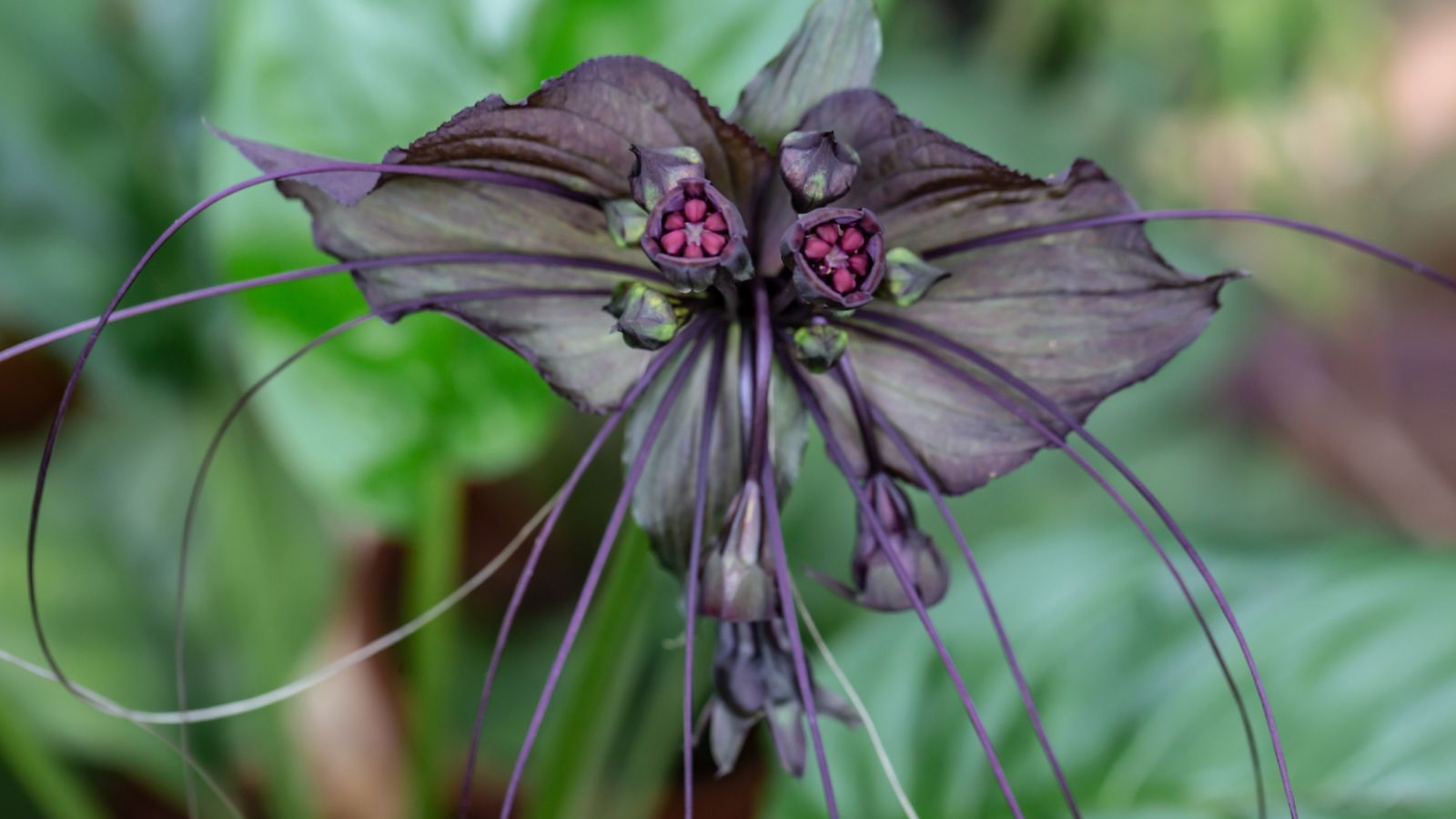[ad_1]
Whether or not or not you’re planning a Halloween house social gathering, you wish to embellish for Halloween yearly, in any other case you just like to keep up the creepy season vibes going all 12 months prolonged, there are a ton of sinister-looking houseplants in the marketplace that will thrive inside the home.
From the bizarre and unusual to the downright creepy, there are tropical vegetation, succulents, cacti, and further from which you will choose. Some have black, gothic leaves; some take the kind of barely disturbing shapes (like brains), and others even odor like lack of life and decay (nevertheless merely rapidly!).
In actual fact, these Halloween picks have assorted care requirements. Some is often an issue, similar to the handful of carnivorous vegetation on this guidelines, nevertheless others are quite a lot of essentially the most easy-going houseplants inside the commerce, similar to the raven ZZ. Each means, we’ll offer you some major care methods to carry your creepy houseplants thriving all 12 months, so on Halloween, they’ll be ready for his or her shut up.
Zulu Huge
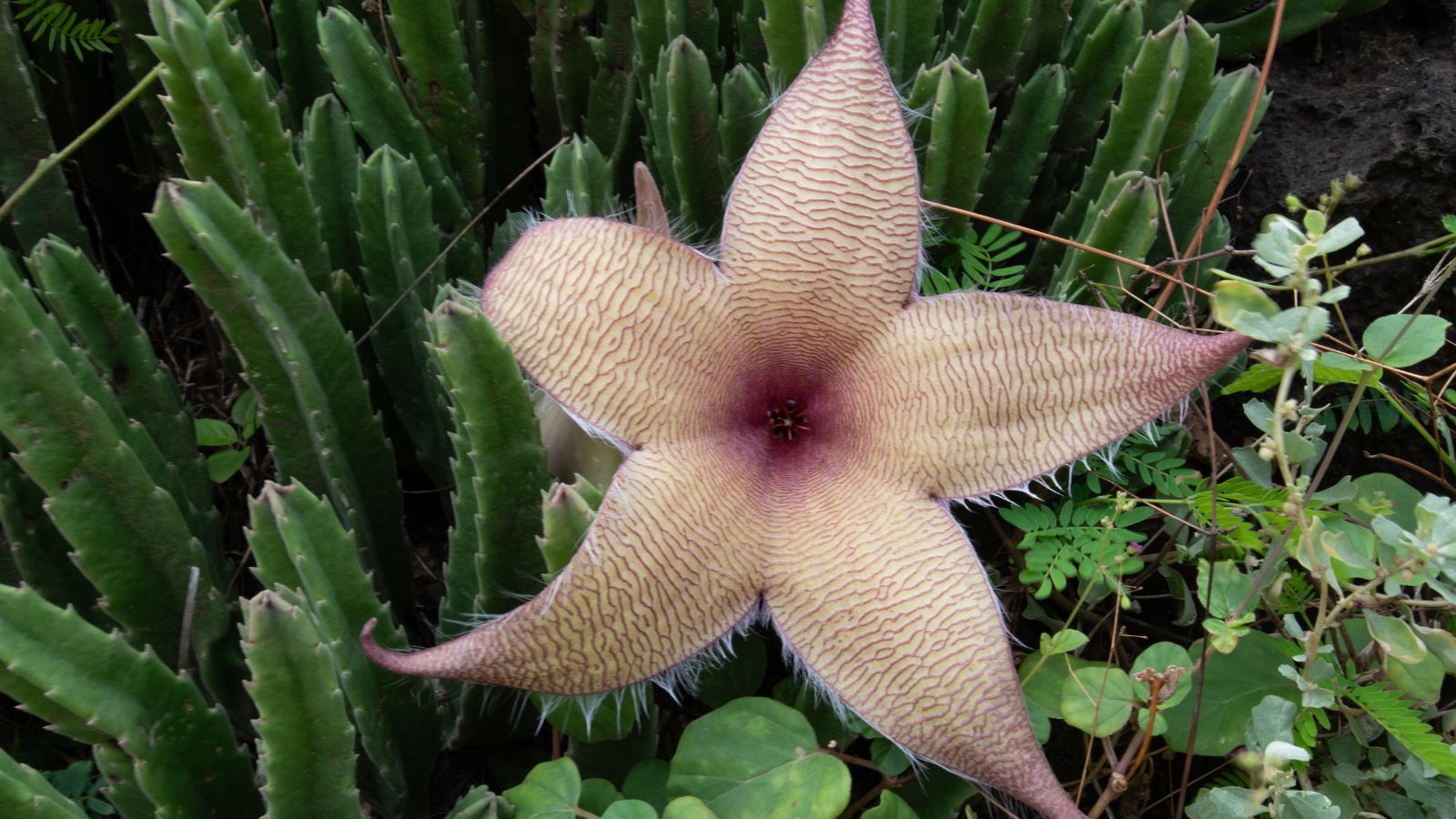

Zulu massive is the widespread title for Stapelia gigantea, a flowering plant that seems to be like like a cactus. It’s largely appreciated for its monumental, creepy-looking flowers. These monumental star-shaped blooms can attain 16 inches in diameter, and they also odor like garbage and decay, attracting flies for just a few days until the odor fades.
Phrase that this African native isn’t inside the cactus family and is, in actuality, a member of Apocynaceae, a family that options Hoya and even milkweeds. No matter its cactus-like look, it would not have spines and is certainly tender to the contact.
That acknowledged, Zulu massive has simply concerning the equivalent care requirements as a cactus. It prefers full daylight and requires well-draining soil to steer clear of rot. Watering Zulu massive is straightforward, as you probably can anticipate it to vary right into a bit floppy. Water completely, and it’ll bounce correct once more.
Begonia Rex
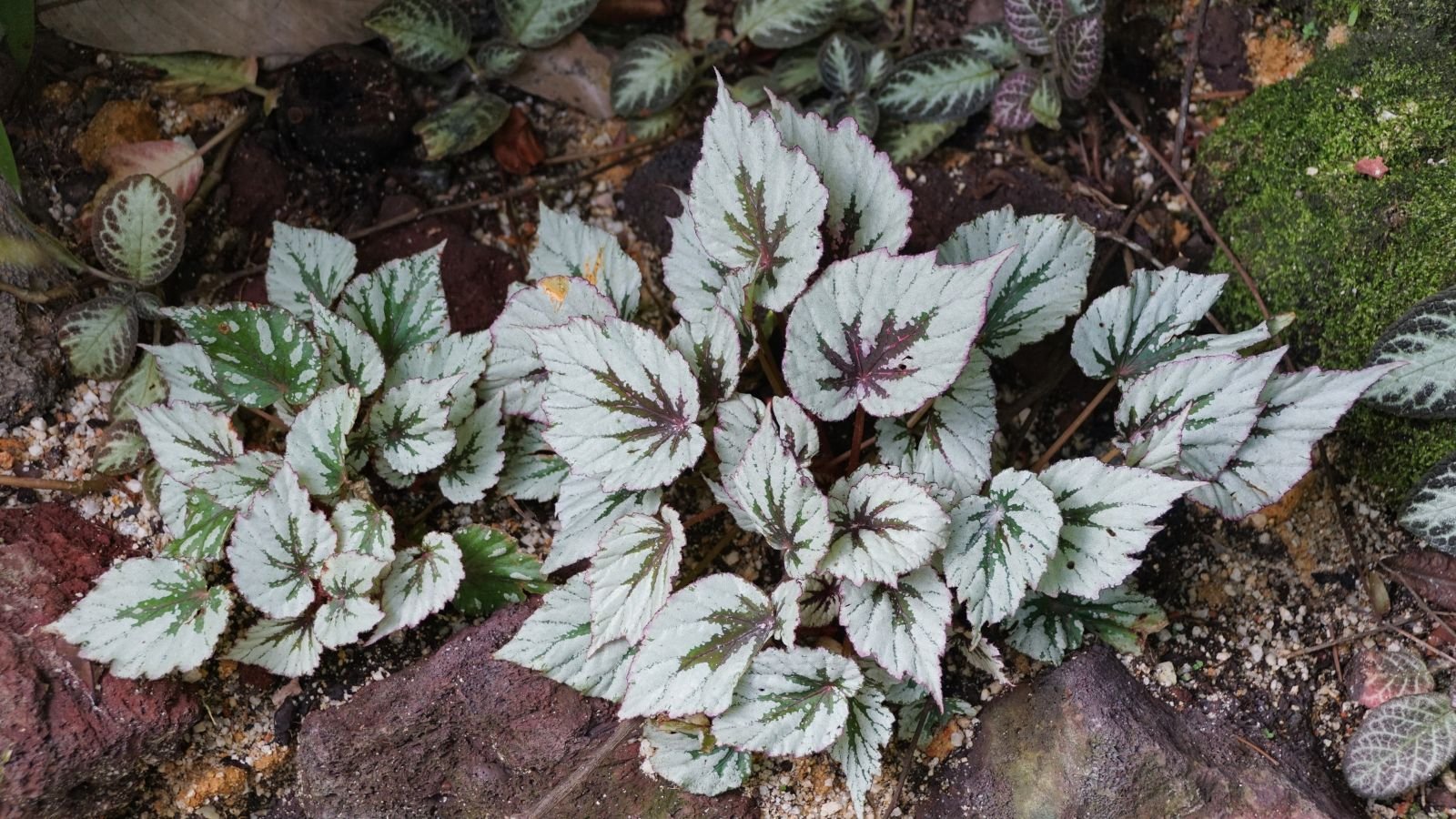

Begonia rex is an easy-going houseplant with actually distinctive foliage. There are quite a few cultivars and hybrids obtainable with leaves in shades of inexperienced, silver, purple, crimson, black, and pink. In case you’re adorning for Halloween, the Begonia rex varieties you’re on the hunt for could possibly be these with darkish purple and or black leaves.
‘Black Velvet,’ ‘Black Mamba,’ and ‘Jurassic Dino’ are just a few of your decisions. The leaves are often not solely darkish in shade however as well as have odd swirls and textures. They undoubtedly stand out amongst totally different houseplants as a bit weird and unusual.
Like totally different Begonia species, these perennials like significantly fixed moisture when saved as houseplants. They will not reply successfully if their soil dries out completely, nevertheless they’ll rot in soggy soil. Extreme humidity will also be key to stopping crispy leaves.
Raven™ ZZ
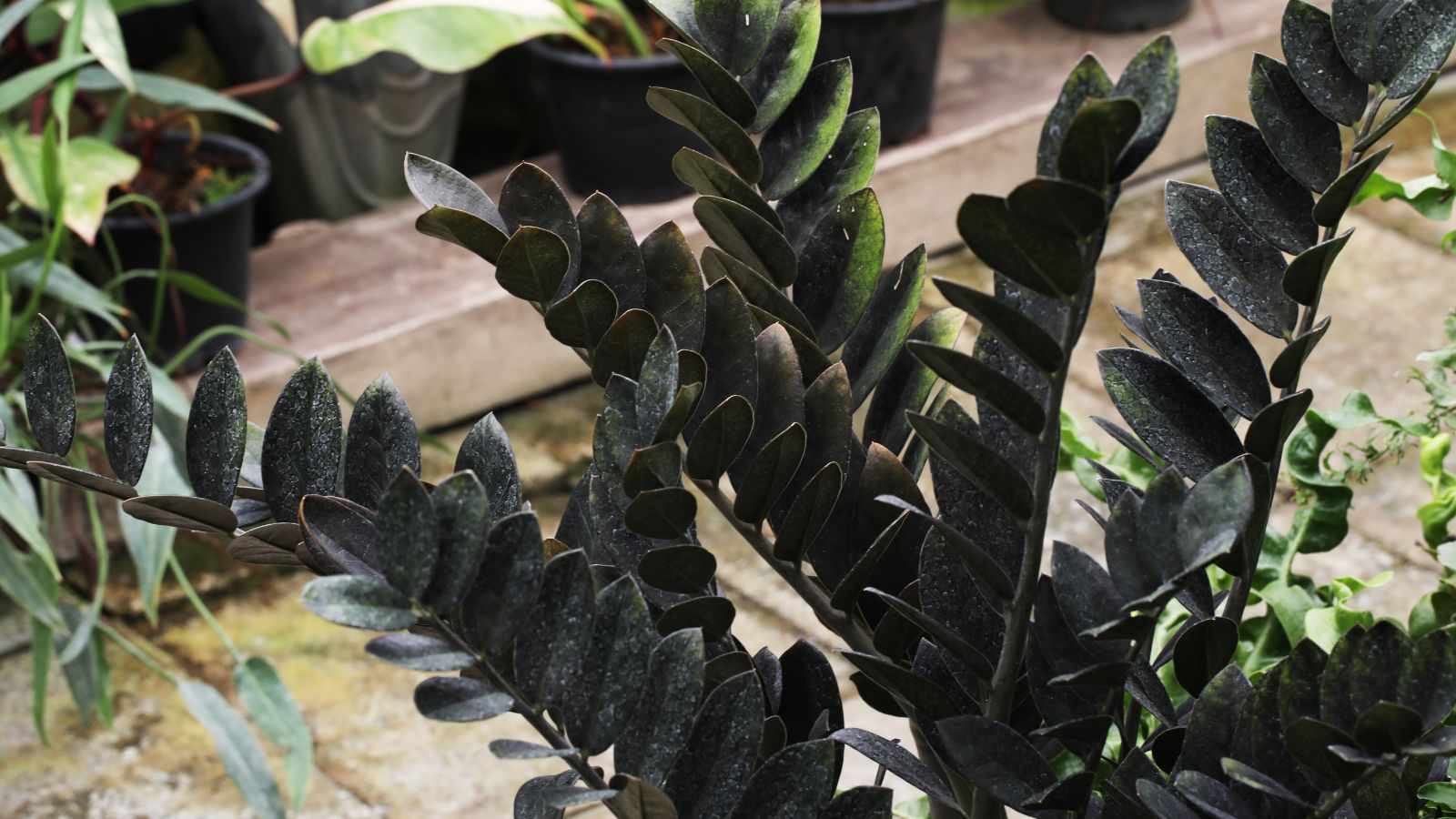

Raven™ ZZ is a cultivar of Zamioculcas zamiifolia, aka the ZZ plant, usually known as most likely essentially the most low-maintenance houseplants in the marketplace. ZZ vegetation will develop in low light circumstances, usually thriving in workplaces and never utilizing a single window.
Usually, ZZ vegetation have shiny, inexperienced leaves, nevertheless the Raven™ ZZ’s leaves are shiny black. This cultivar offers extreme Edgar Allan Poe vibes, not solely from the black leaves however as well as its title. Switch Raven™ ZZ anyplace you need further black in your Halloween decor, and it’ll develop there merely great.
Together with its restricted light needs, Raven™ ZZ barely needs any water. Its bulbous root system outlets a ton of moisture. In late fall and winter, it is advisable to water it as quickly as a month. It could possibly be most likely essentially the most beginner-friendly creepy Halloween houseplant.
Echeveria ‘Black Prince’
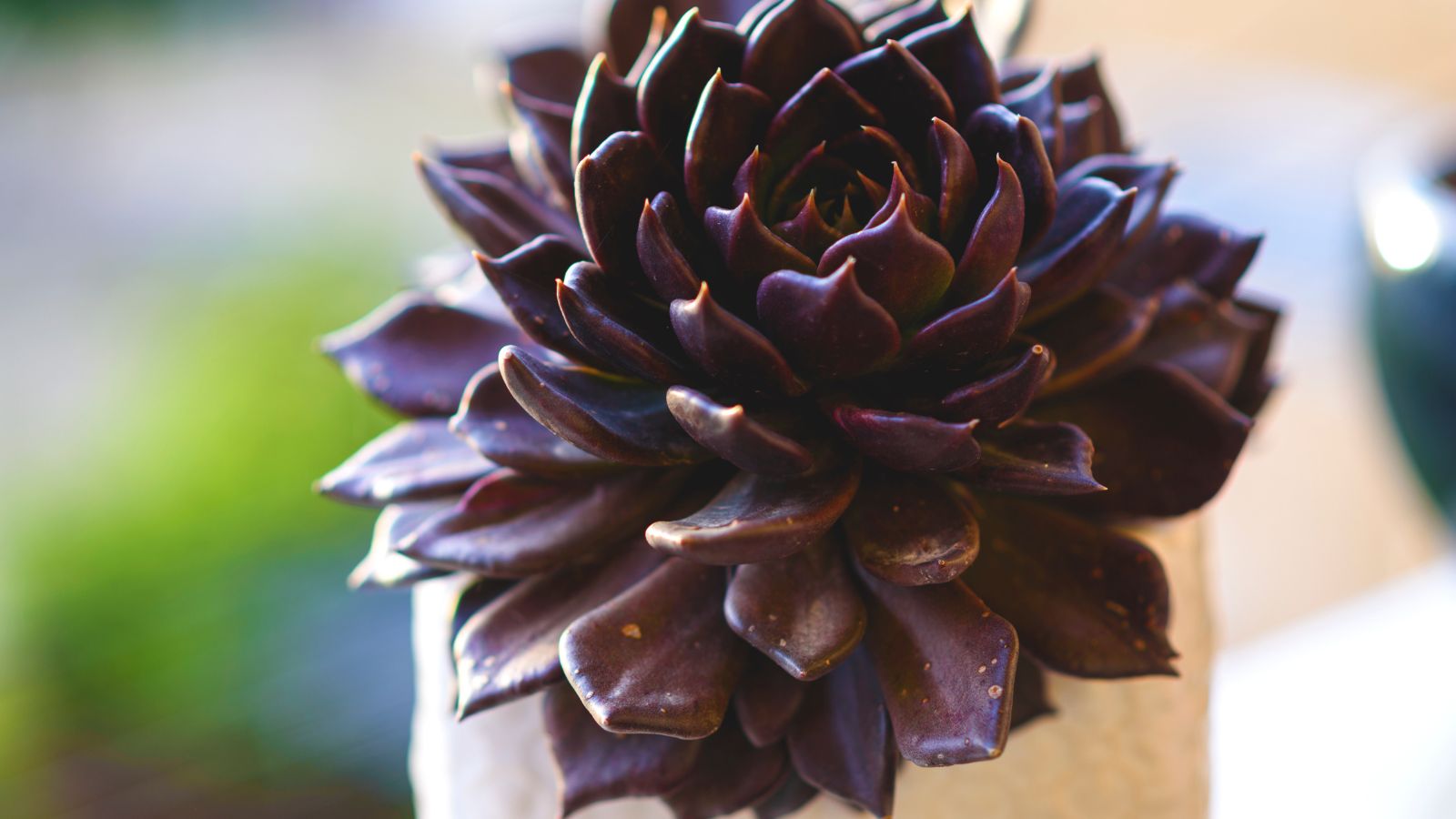

Echeveria ‘Black Prince’ is a shocking rosette-shaped succulent with darkish crimson leaves which is perhaps nearly black. The leaves are inexperienced in course of the center of the rosette, transitioning to crimson after which black in course of the perimeters.
In poor lighting, ‘Black Prince’ leans further inexperienced, nevertheless in a location with full photo voltaic publicity, it’ll be a steady shade of black. It’s the proper Halloween succulent you most likely have a south-facing window, skylight, or great sunny spot. You may additionally acquire full black leaves with a strong develop light.
It’s best to plant these succulents in well-draining soil in a pot with a drainage hole, ideally one fabricated from terracotta or clay. Wait until the soil is completely dry sooner than watering these vegetation. When you do, water until further pours out of the drainage hole.
Pitcher Plant
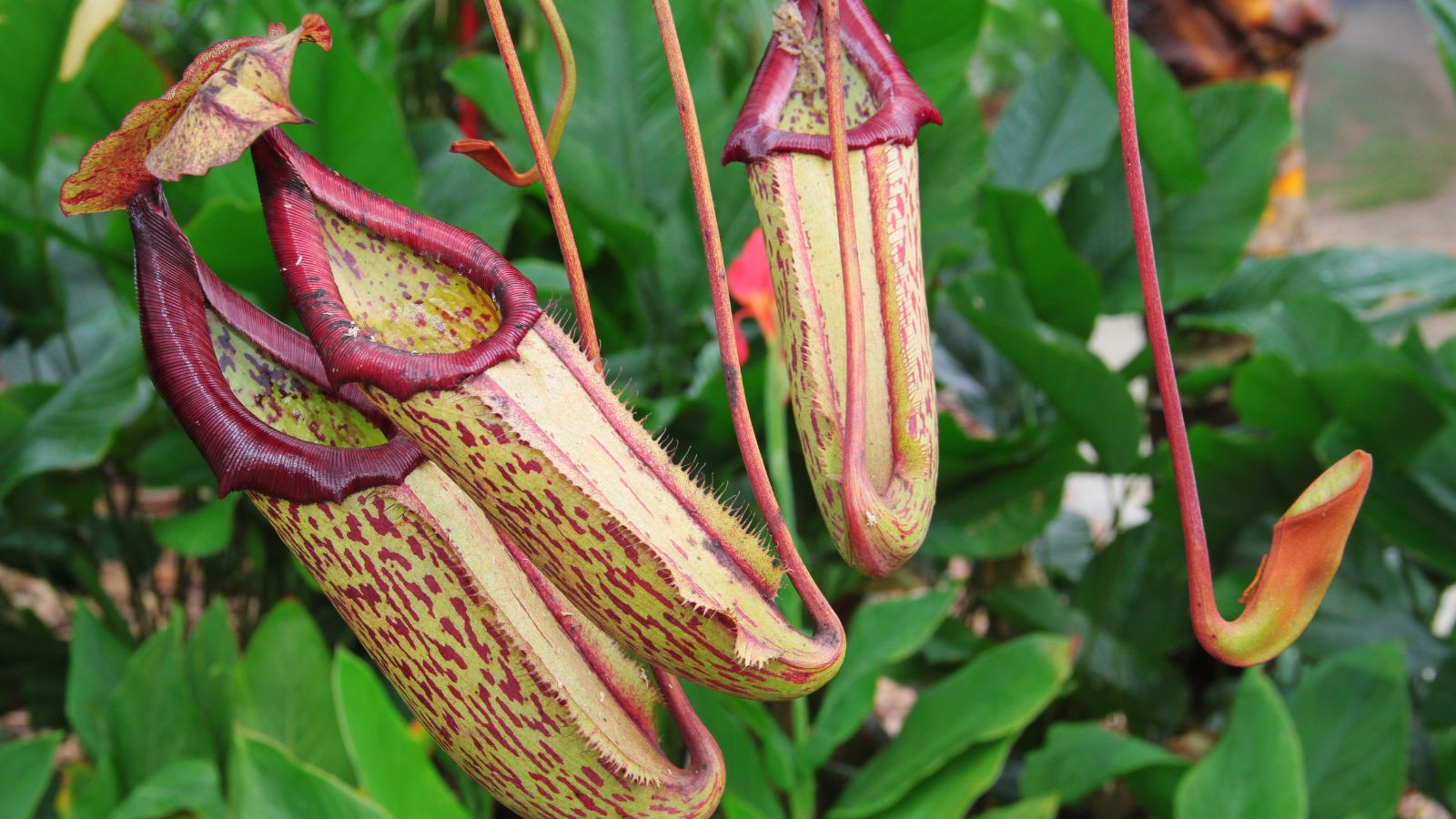

Pitcher vegetation of the Nepenthes genus aren’t most likely essentially the most beginner-friendly houseplants, nevertheless if you’re as a lot because the obligation, there’s nothing further wonderful for a creepy Halloween decoration. The pitchers on these carnivorous vegetation actually eat bugs, and what could very properly be spookier than that? (To not level out helpful, you most likely have a fungus gnat draw back.)
Often, these pitcher vegetation is perhaps potted in sphagnum moss, though usually nurseries plant them in soil. They like their potting medium to be persistently moist nevertheless under no circumstances moist. The roots should breathe. Moisten the sphagnum sooner than it dries out, or use a moisture meter to guage the soil and water merely sooner than it goes from “moist” to “dry.”
Use distilled water. It’s important that you just simply under no circumstances water pitcher vegetation with faucet water and under no circumstances fertilize them. They get their nutritional vitamins from the carnivorous pitchers, so if you present any (along with trace portions in faucet water), they may stop producing the pitchers absolutely.
Thoughts Cactus
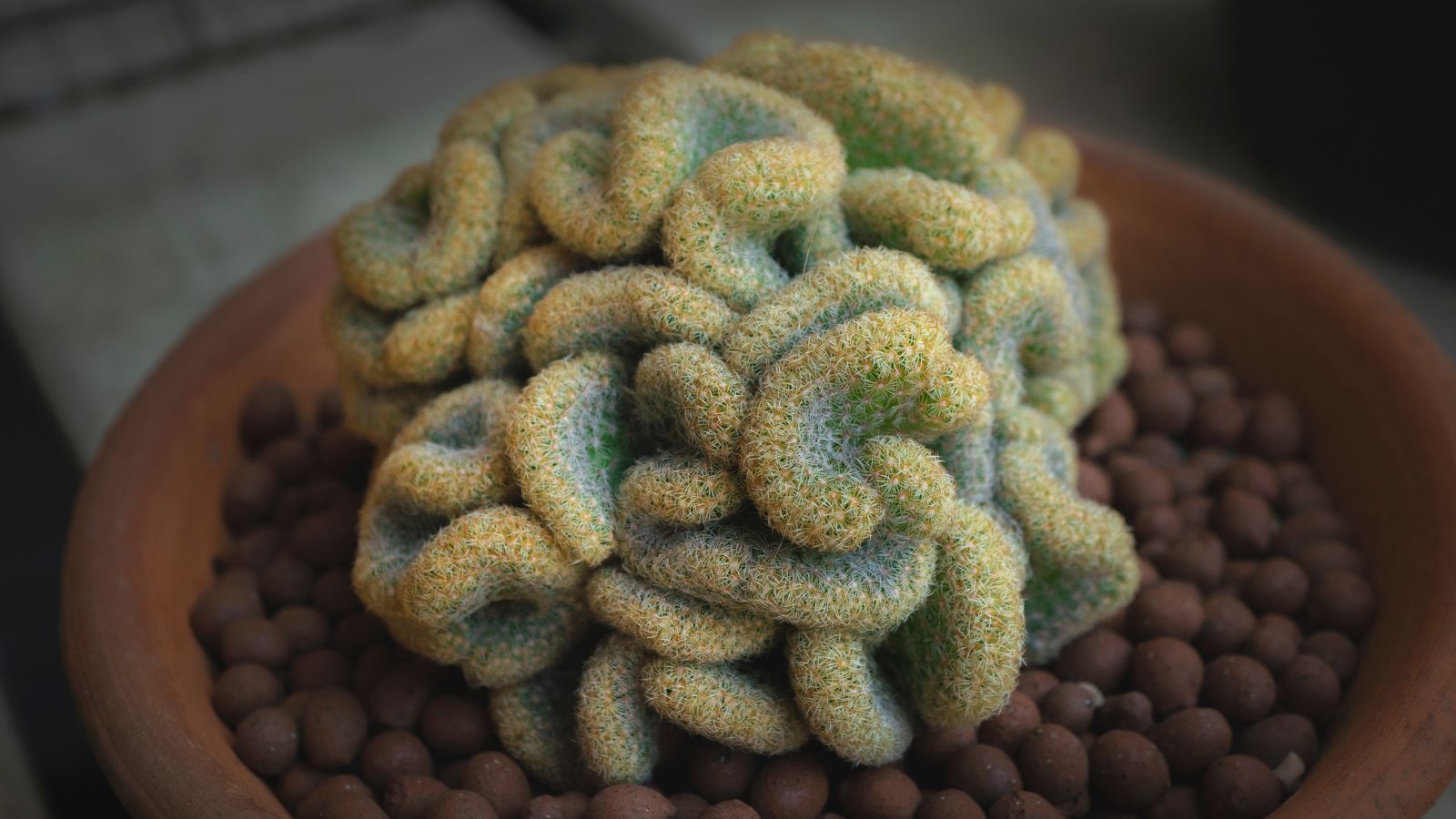

It’s not exhausting to find out why the thoughts cactus is on this guidelines. It seems to be like like a thoughts, making it the proper houseplant to put with skull-related Halloween decor.
However, if you’re organising a standard “eyeballs however it’s really grapes” or “intestines however it’s really spaghetti” station, persist with Jell-o for the brains, as a result of the thoughts cactus is lined in tiny spines. Maintain it away from youngsters and allow them to soundly take pleasure in its spooky enchantment from afar.
Like most species inside the Mammillaria genus, the thoughts cactus needs a great deal of light to develop accurately and acquire the proper brain-like kind. A south-facing window and/or supplemental develop lights is perhaps your most interesting guess when rising it indoors.
Try shifting this cactus exterior in spring and summer time season to supply optimum lighting, after which when it’s time to ship it indoors for Halloween, it must be in good kind.
Venus Fly Entice
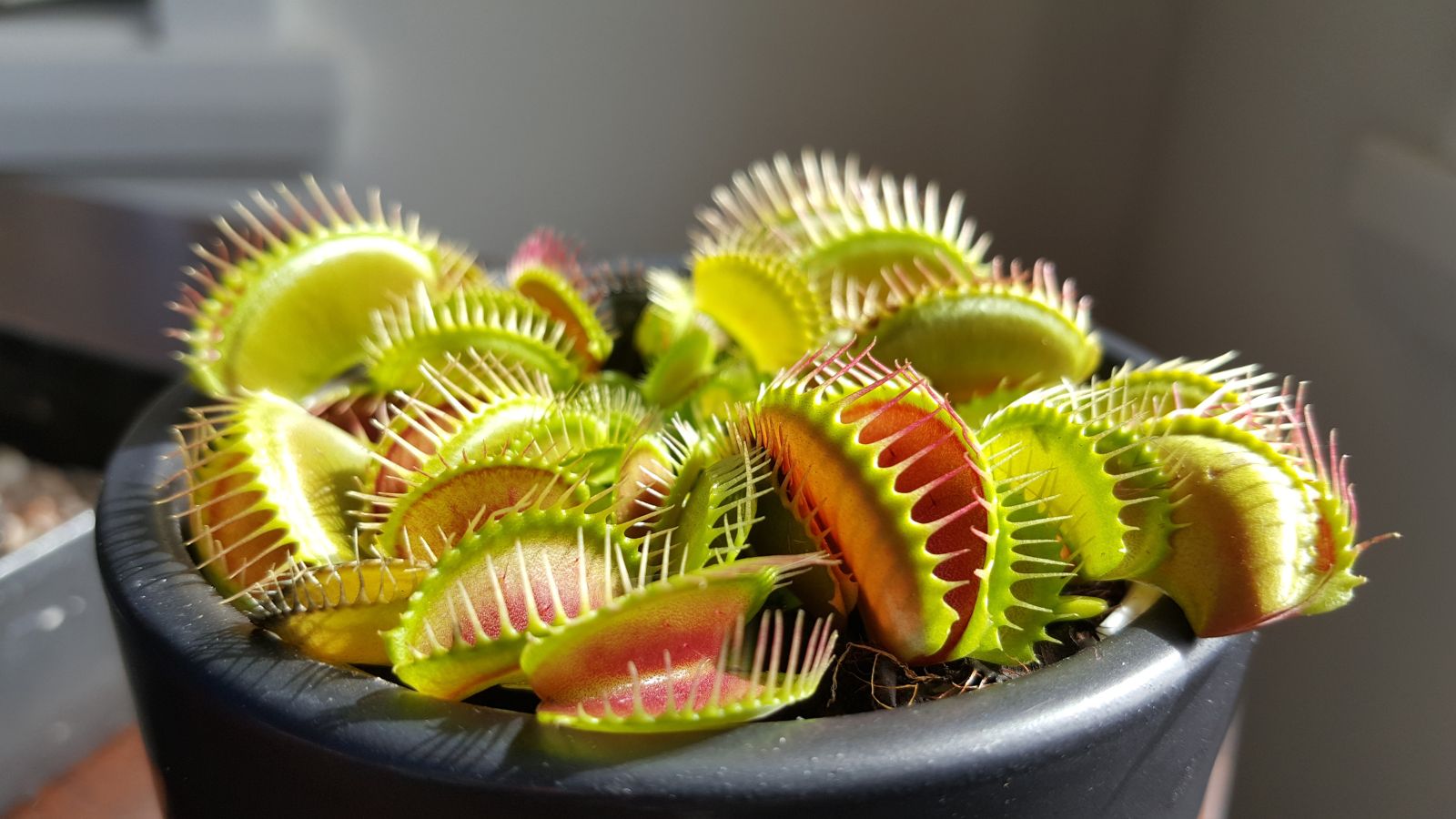

One different carnivorous species like pitcher vegetation, the Venus fly entice makes an outstanding creepy Halloween houseplant. In actuality, there are further faux Venus fly traps in Halloween decor than ever sooner than, suppose “Little Retailer of Horrors,” so why not get the true issue?
Like Nepenthes, Venus fly traps get their nutritional vitamins from tiny bugs that get caught inside the traps, and so they don’t love supplemental fertilizer. Do not plant them in soil with fertilizer, do not water them with faucet water (use distilled instead), and undoubtedly skip them when you’re fertilizing the rest of your vegetation.
As well as they like to sit in moist soil that under no circumstances dries out. It will make them a bit further high-maintenance than quite a lot of the cacti on this or the raven ZZ, nevertheless caring for Venus fly traps is properly definitely worth the hassle.
Geogenanthus


Geogenanthus ciliatus, usually merely referred to informally as geogenanthus or “geo,” earns a spot on this guidelines with its enticing, dark-purple-to-nearly-black leaves. This foliage is shiny, thick, and practically leathery, standing out in a sea of inexperienced decisions. It’s the model new “goth plant” on the houseplant scene.
Whereas the leaves themselves are large (as a lot as eight inches prolonged), the plant itself doesn’t get very tall, reaching about ten inches extreme at maturity. Plant it in well-draining soil and place it in a spot the place it can get shiny, indirect daylight or refined window light.
Maintain the soil in your geogenanthus’s pot moist, as a result of it doesn’t desire to dry out and may droop dramatically. A ceramic or plastic pot may be supreme to retain extra moisture. Make certain to not overwater and on a regular basis allow water to empty out of the drainage hole.
Residing Stones
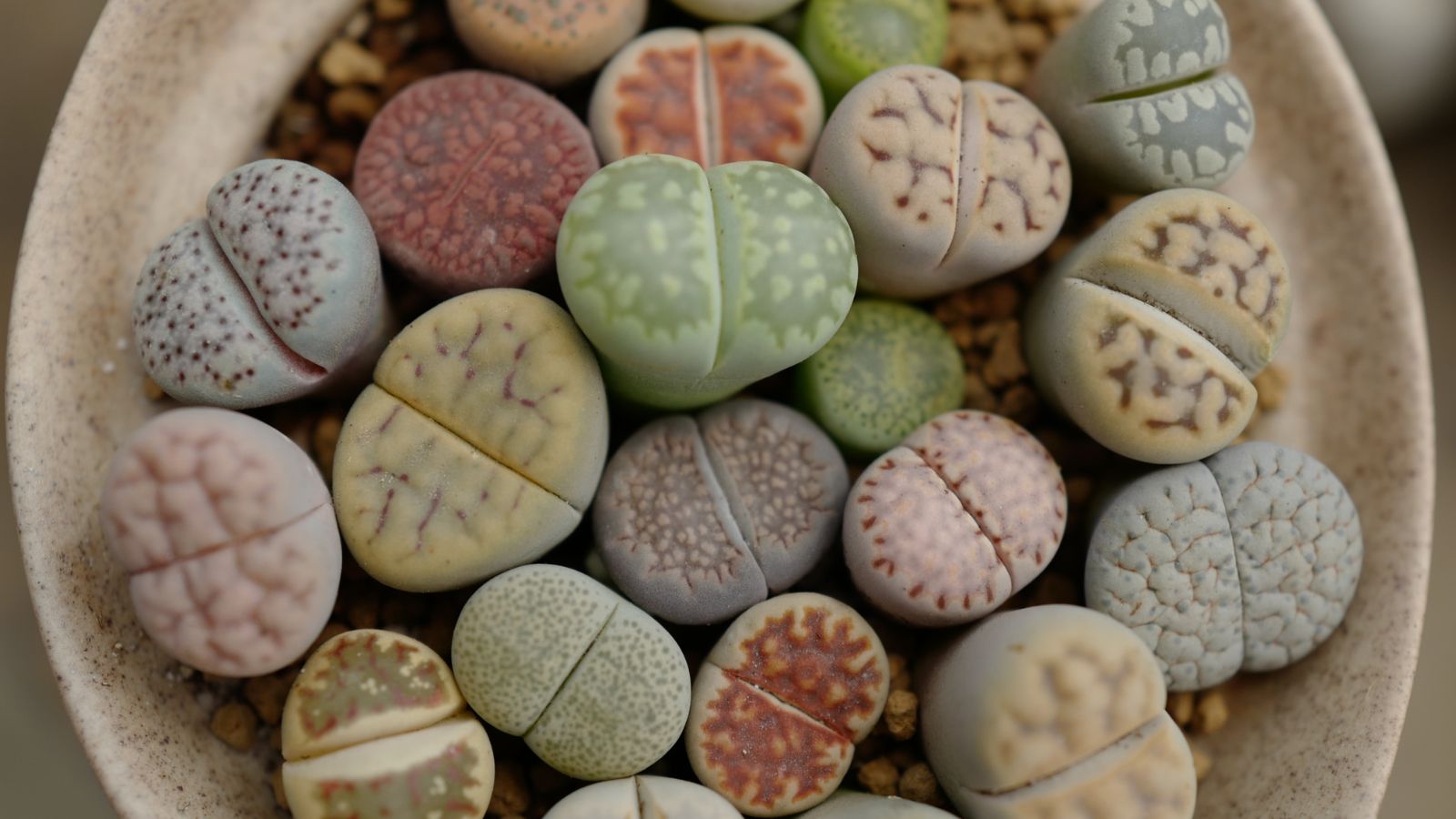

Lithops refers to a genus of 37 species of small, spherical succulents that look like rocks. Considerably, it could possibly be simple to overlook them as rocks within the occasion that they weren’t located in a plant nursery. These bizarre dwelling stones minimize up down the center, from which new improvement emerges.
Whereas not exactly scary, they’re undoubtedly weird attempting. Some collectors uncover their kind and their technique of improvement to be off-putting and weird.
Like many succulents, dwelling stones need full photo voltaic and wish little or no water to get by. Residing stones would look good subsequent to a thoughts cactus in a sunny window, nevertheless maintain Lithops vegetation of their very personal pot.
In actuality, Lithops species need water solely at certain events of their improvement cycle. The one events it is advisable to water them are in late spring/early summer time season and late summer time season/fall. They must be in fully dry soil through peak summer time season and all through winter.
Philodendron ‘Royal Queen’
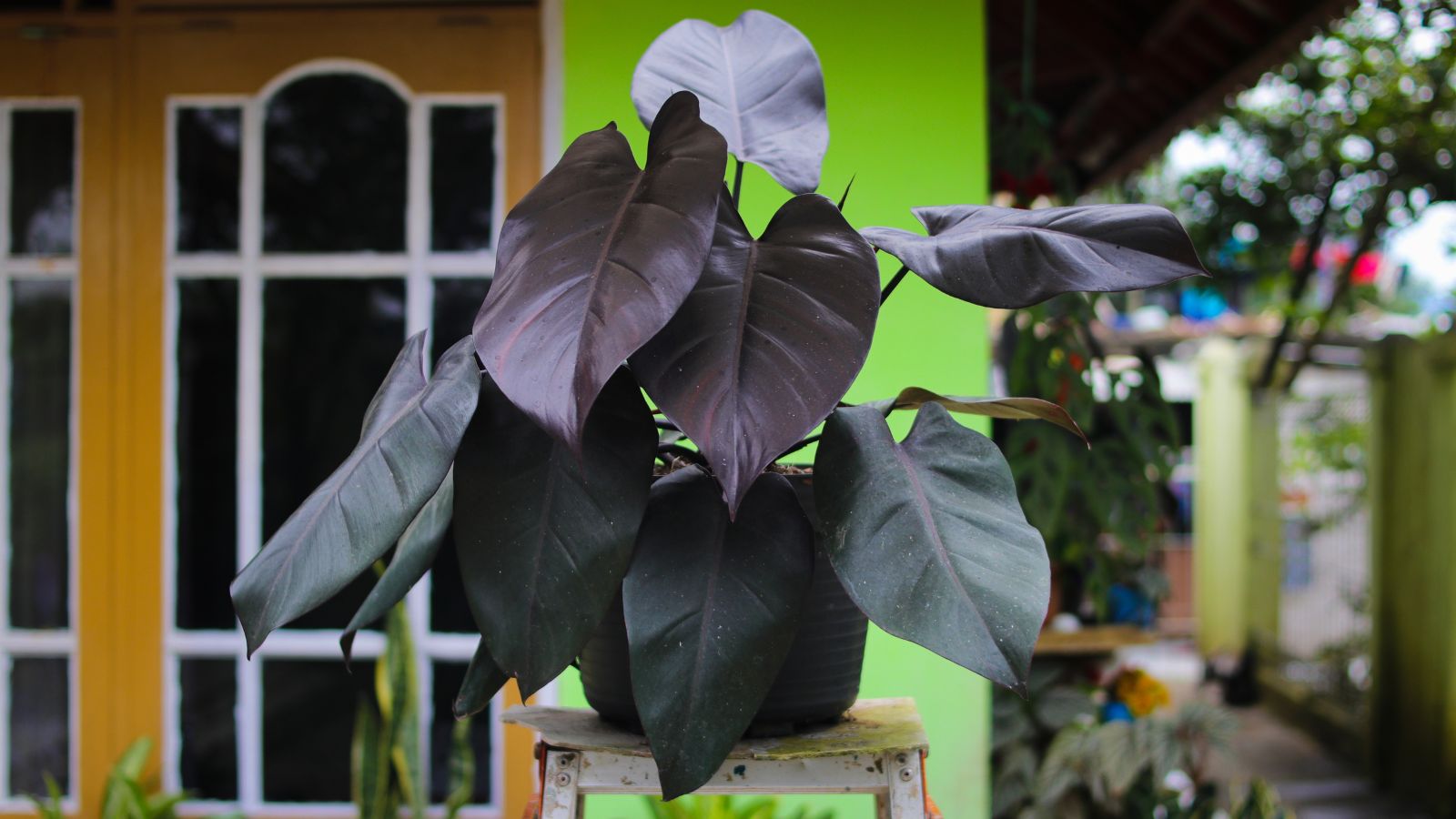

With dramatic darkish purple leaves that appear nearly pitch black and a attainable mature peak of 4 ft, Philodendron ‘Royal Queen’ is match for an actual creepy Halloween houseplant present. Fortunately, it’s great simple to take care of, like most Philodendron species, as long as you could possibly have the home for it.
‘Royal Queen’ will thrive in shiny, indirect daylight or in a spot that may get a few hours of direct light from a window (merely steer clear of midday photo voltaic), and it doesn’t need mounted moisture. Sit up for the soil to dry out, then water completely.
The trick to rising these vegetation good is to encourage them to climb. Merely tying them to a pole or trellis isn’t ample to ensure that you large, beautiful leaves. Create a moss pole that’s actually full of sphagnum moss for the aerial roots of ‘Royal Queen’ to actually become, and this Philodendron will produce monumental, great darkish leaves. Don’t neglect to water the moss and maintain it moist for the entire influence.
Sundews
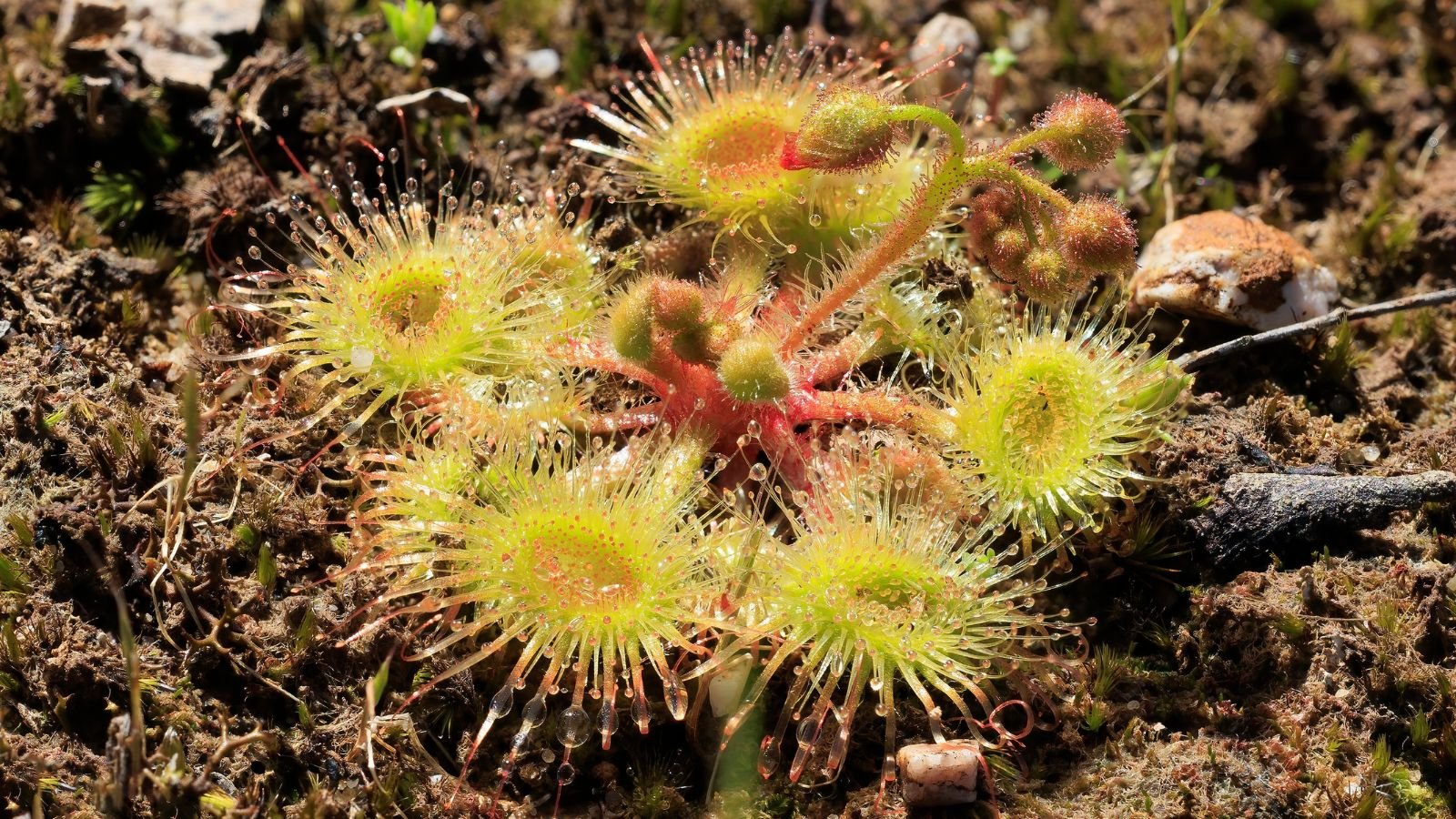

One different carnivorous plant chance, sundews are significantly lesser acknowledged carnivorous vegetation for model new houseplant collectors. These small, sticky vegetation have tendrils that unfurl like octopus tentacles, lined in dewy, hair-like constructions that enchantment to and digest bugs.
Given the tentacle look, sundews would really add a Lovecraftian actually really feel to your Halloween decor. Sundews are typically shiny shades of inexperienced, yellow, or pink, with crimson dew. They’re undoubtedly creepy-looking, and that’s sooner than you research that the “dew” in “sundew” is full of digestive enzymes.
Species all through the Drosera genus differ, nevertheless most will do most interesting in a sunny window. They like persistently moist soil, just like pitcher vegetation and Venus fly traps. It’s moreover essential that you just simply steer clear of watering sundews with faucet water, which has nutritional vitamins these vegetation haven’t superior to simply settle for. Use distilled water instead.
Emerald Ripple Peperomia
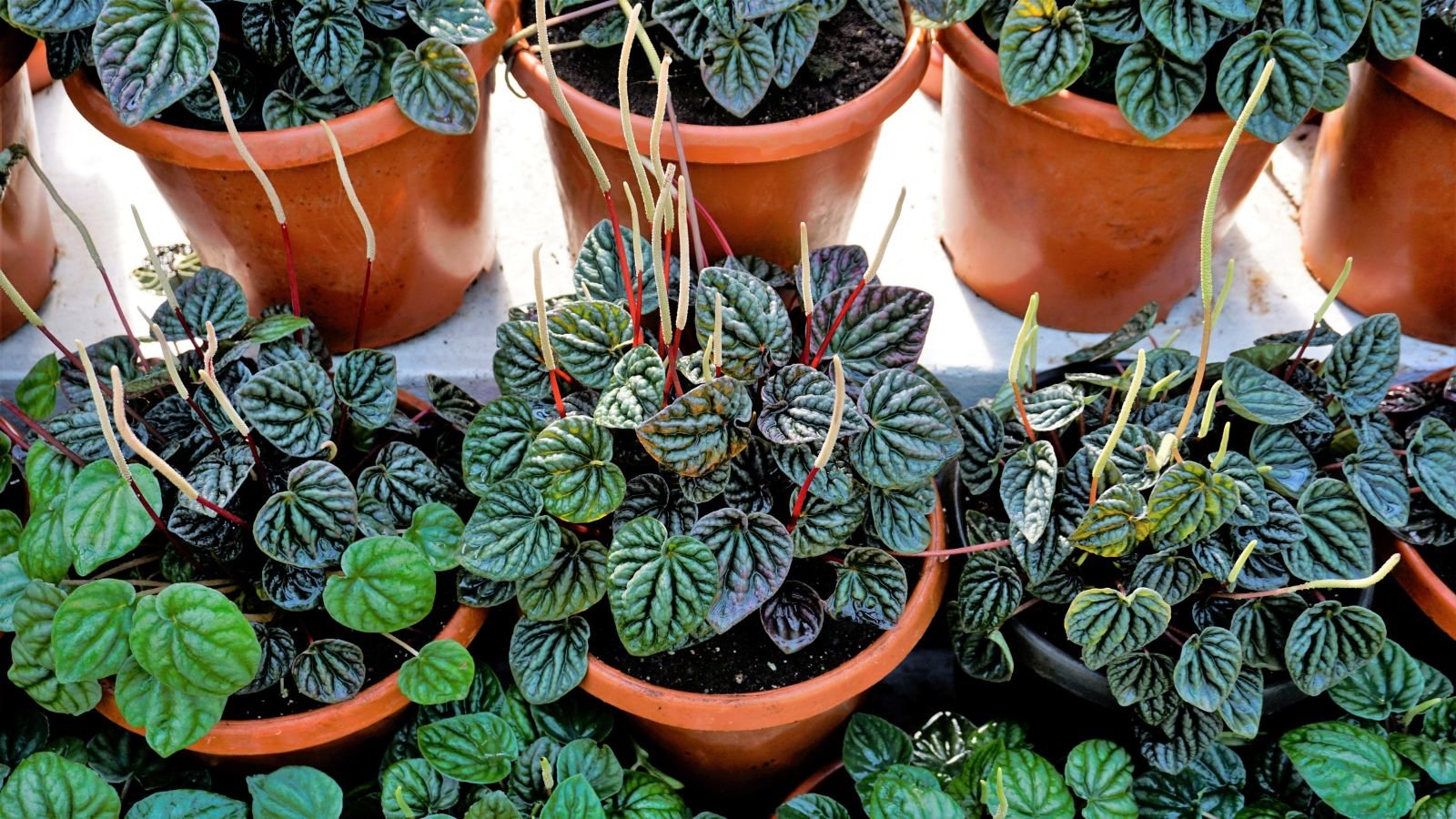

Emerald ripple peperomia isn’t exactly most likely essentially the most horrifying plant on this guidelines, though its darkish inexperienced or emerald leaves fully reward Halloween shade schemes. The foliage moreover has a bumpy, atypical texture.
There’s a fairly prolonged guidelines of cultivars of emerald ripple peperomia obtainable—along with the red-leaved ‘Crimson Luna’ and ‘Abricos,’ which has leaves with an orange barrier—which could really pop subsequent to a raven ZZ or geo plant.
Peperomia vegetation don’t need an extreme quantity of light, in order that they’ll do precisely great inside the shiny, indirect light. Like a typical houseplant, you want to wait until their soil dries out completely after which give them an excellent drink.
Earlier Man Cactus
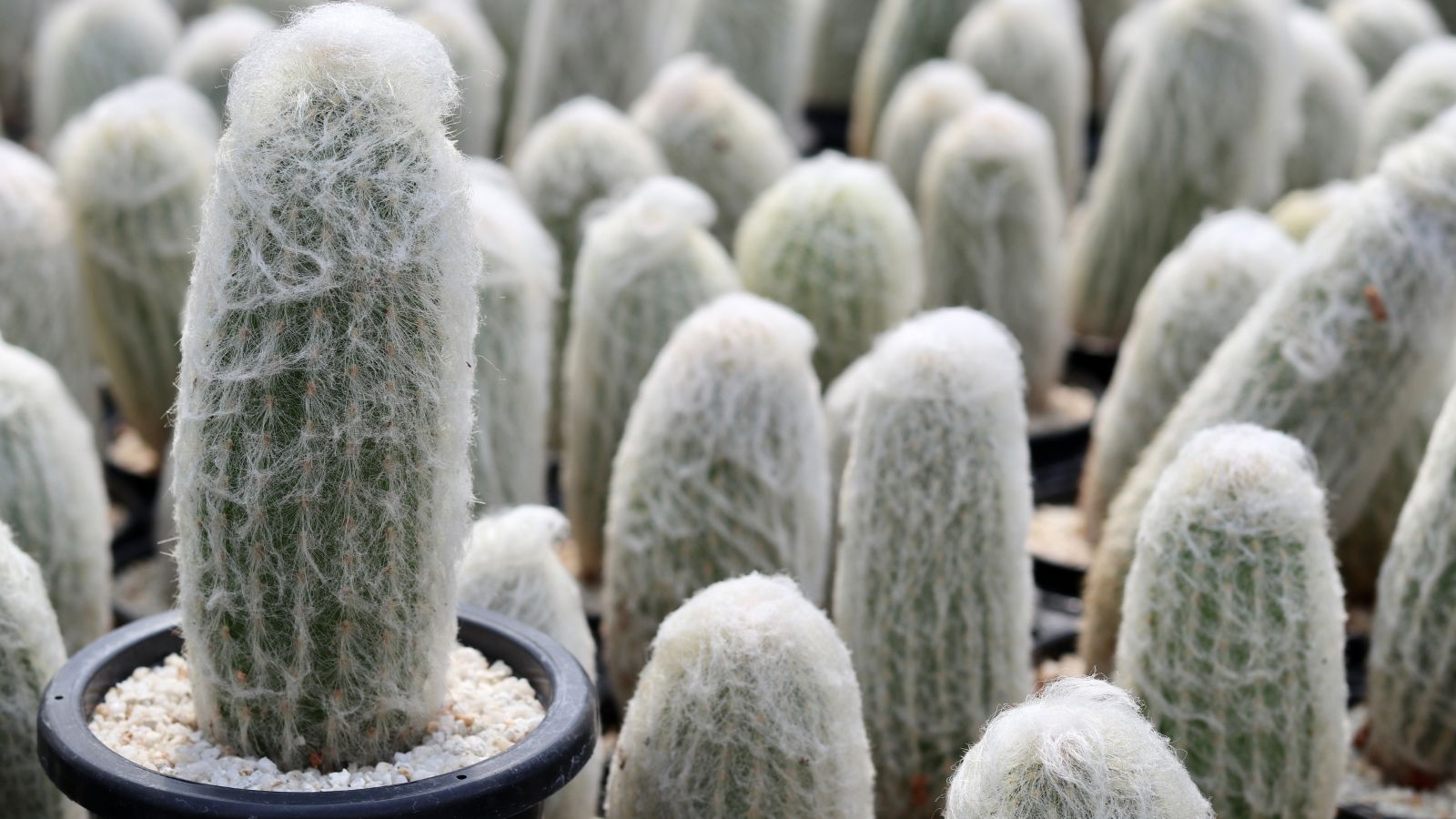

Earlier man cactus is an actual cactus with conventional cactus care requirements: quite a few light, well-draining soil, and minimal water. What makes it stand out is what appears to be furry, white hair defending it, paying homage to an outdated man who needs to go to the barbershop.
These cacti are kind of creepy and paying homage to Cousin Itt. They’re unusual amongst so many alternative cacti which is perhaps comparable. This season, an outdated man cactus would look wonderful near your thoughts cactus, dwelling stones, or dark-leaved rosette succulents.
Plant outdated man cactus vegetation in terracotta pots with drainage and under no circumstances permit them to take a seat in water.
Alocasia ‘Black Velvet’
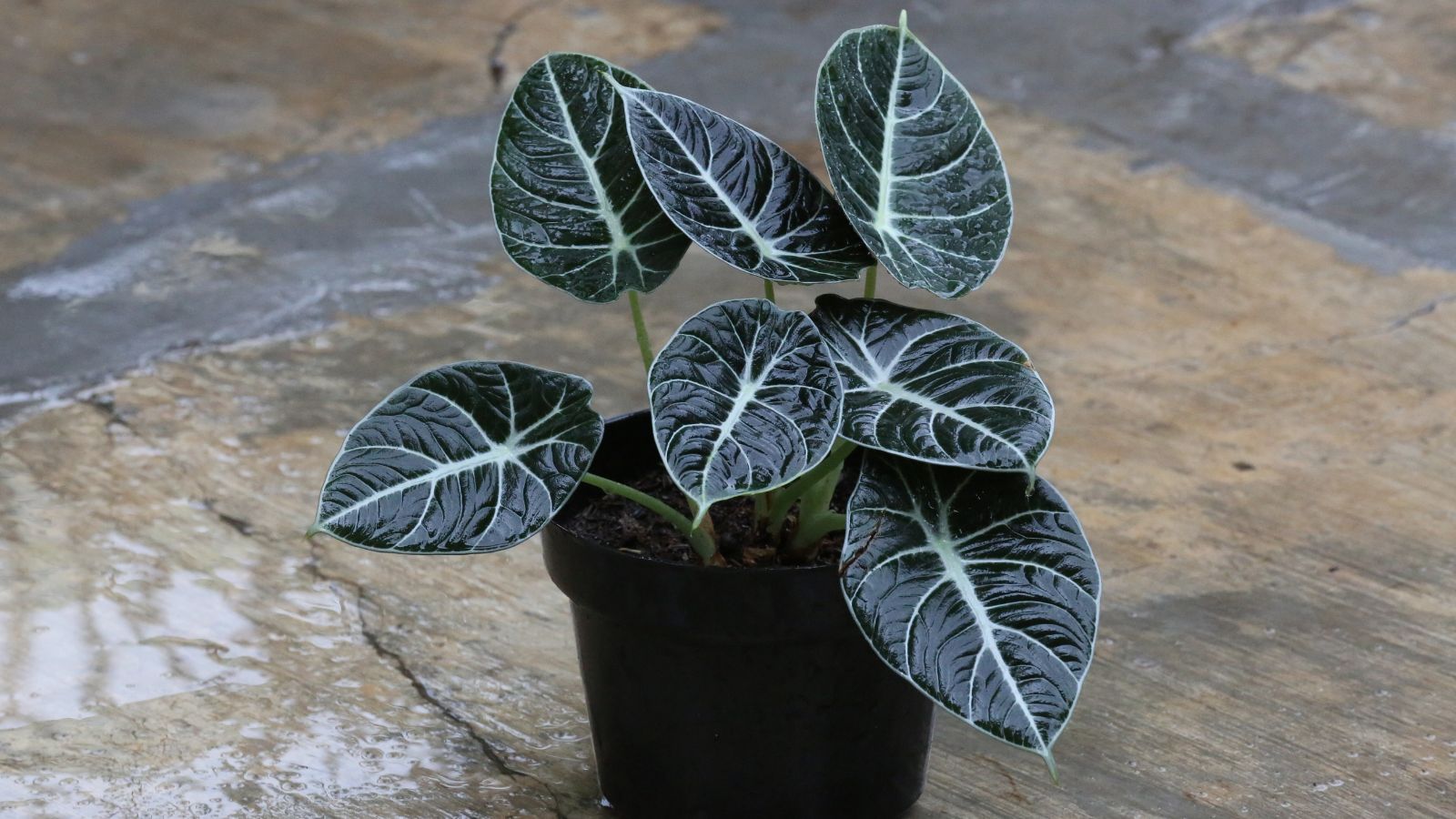

Alocasia ‘Black Velvet’ is an precise stunner. It’s the suitable various for the houseplant lover who’s attempting not just for an accent this Halloween, however as well as a plant that provides off a goth aura all 12 months prolonged. ‘Black Velvet’ has monumental, velvety leaves which is perhaps darkish inexperienced (nearly black), with distinguished veins and crimson undersides.
This plant is perhaps significantly finicky, however it’s properly definitely worth the gamble. Maintain its soil moist nevertheless not moist, and don’t let it dry out 100%. ‘Black Velvet’ will not tolerate drought however as well as will perish in soggy soil, so use a moisture meter to stay on observe.
Aeonium ‘Zwarktop’
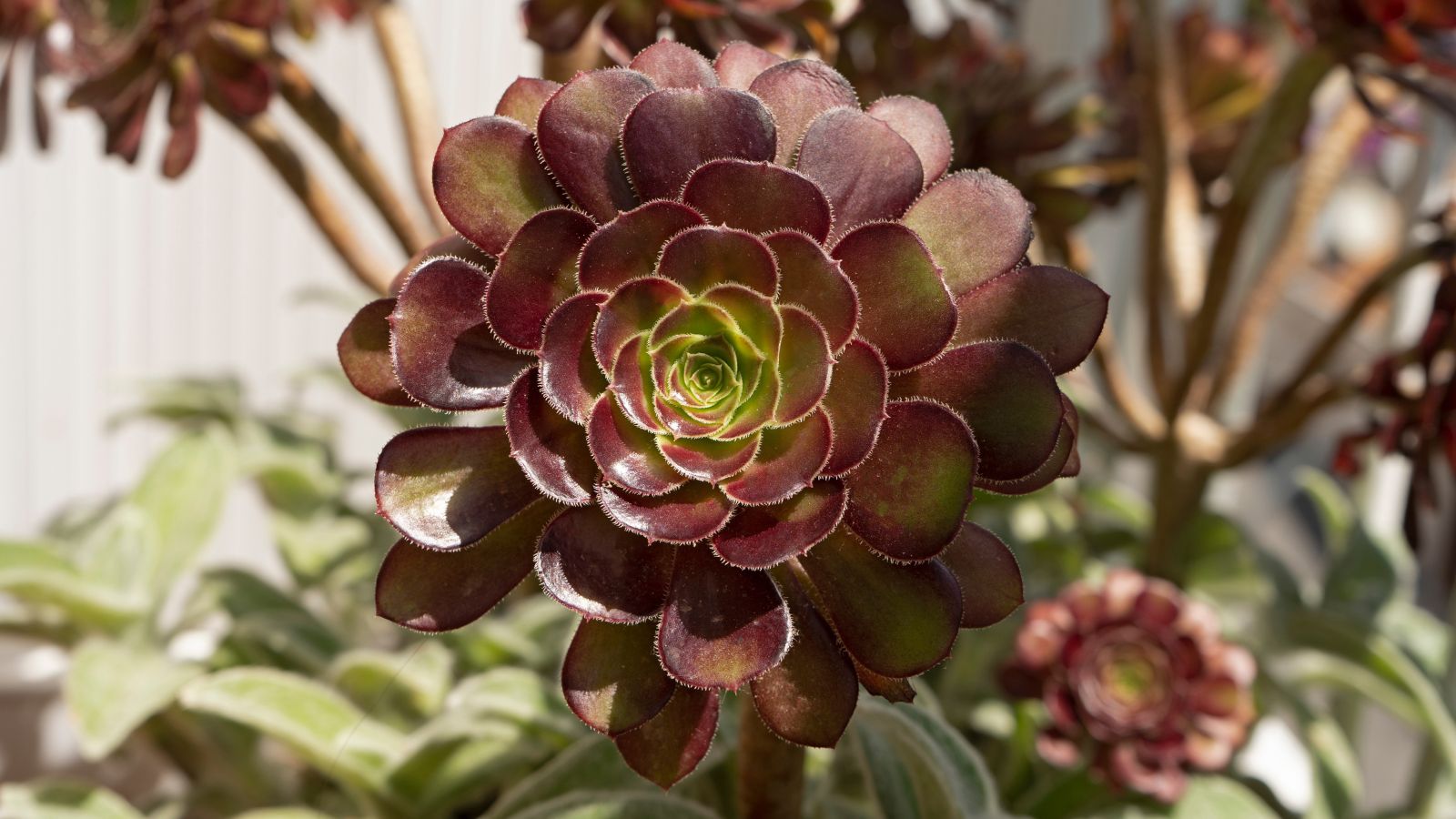

Very similar to Echeveria ‘Black Prince,’ Aeonium ‘Zwarktop’ is a black-leaved cultivar of a popular rosette-shaped succulent. Aeonium vegetation look similar to Echeveria nevertheless have thinner leaves. They develop fairly shortly and type stems over time.
‘Zwarktop’ has mega-dark purple leaves that appear black, with some inexperienced on the guts of the rosette. These succulents can tolerate partial shade, whereas the equivalent can’t really be acknowledged for Echeveria. In case you lack the right indoor lighting, ‘Zwarktop’ is the spooky succulent for you.
Be careful to not overwater ‘Zwarktop,’ which has a typical succulent intolerance for moist soil.
Burgundy Rubber Tree
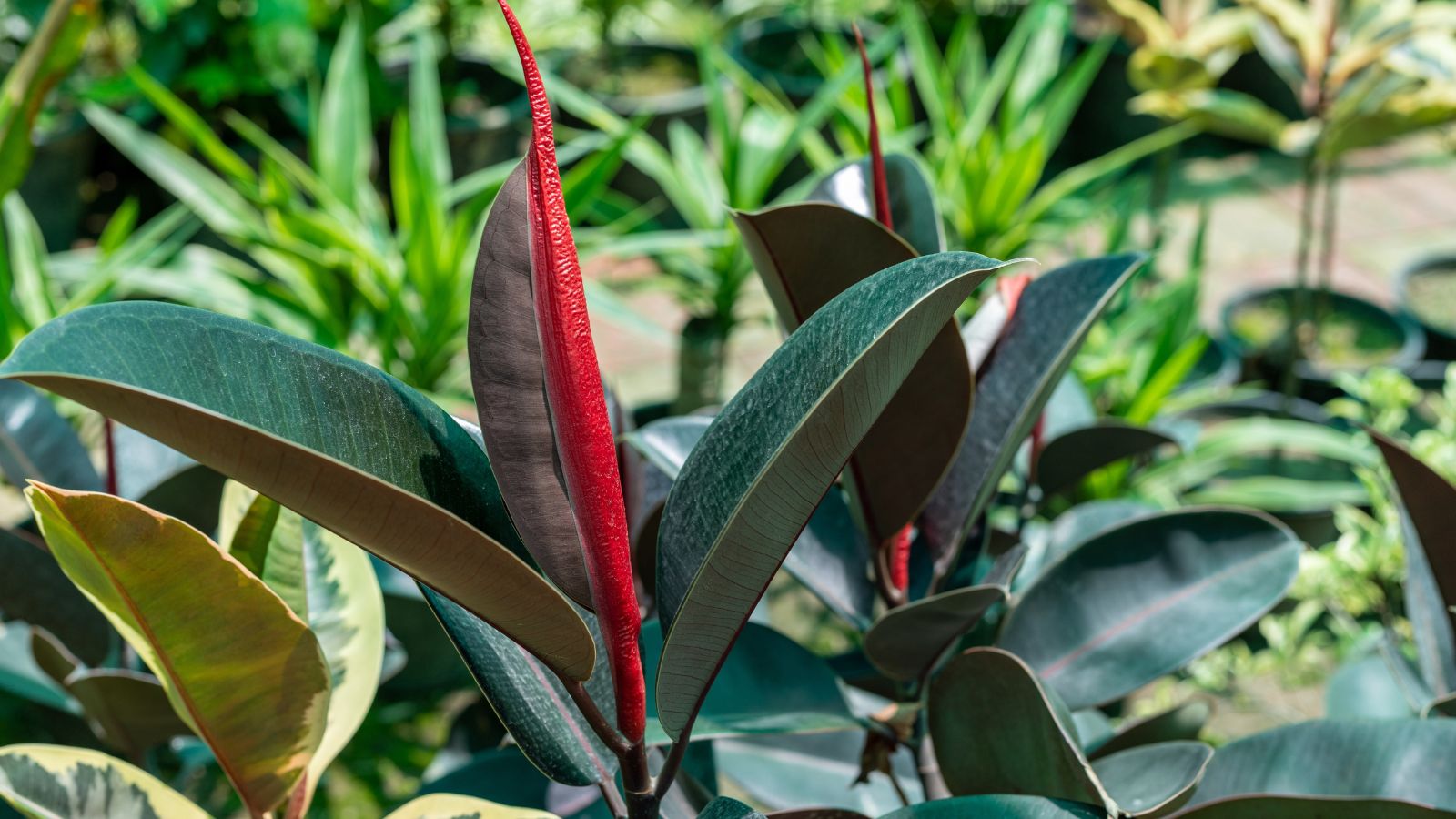

Burgundy rubber bushes are the easiest Halloween houseplant chance if what you’re really looking for is further of a tree. You typically uncover these vegetation after they’re nonetheless solely just a few ft tall in nurseries, nevertheless they can attain 40 ft in peak in supreme circumstances.
Okay, so probably you don’t have that kind of peak in your own home, nevertheless burgundy rubber bushes—with their darkish, broody leaves—may solely develop a foot or two yearly indoors. Plus, the bigger it can get, the additional monstrous it appears.
In case your tree begins to the contact the ceiling, you probably can switch it exterior (cold-hardy in zones 10-12) or give it the outdated chop and prop, sharing cuttings with buddies.
Scindapsus treubii ‘Darkish Kind’
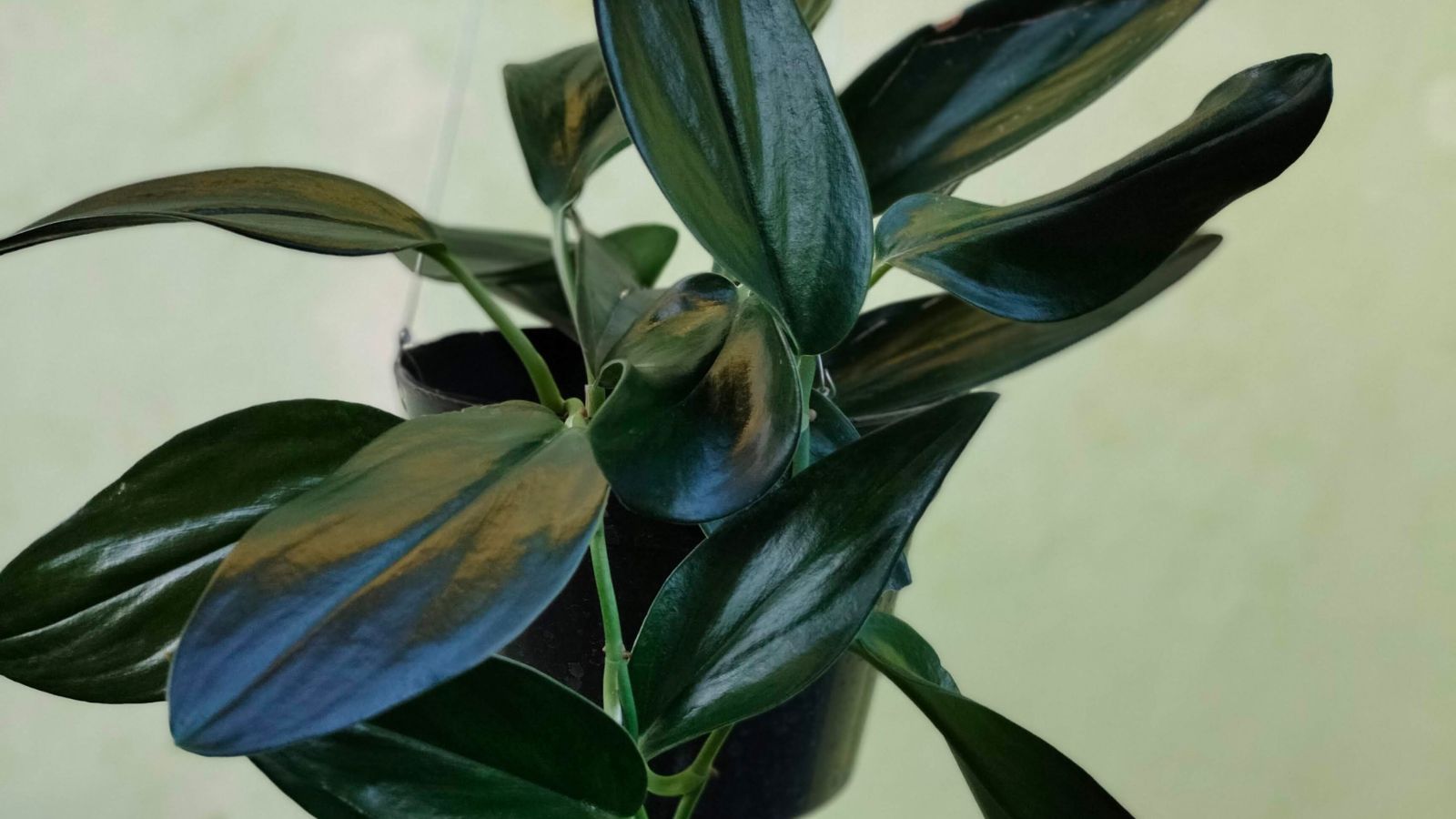

Scindapsus treubii ‘Darkish Kind’ is one other alternative that makes the guidelines attributable to its darkish inexperienced, almost-black leaves, as indicated by its cultivar title. ‘Darkish Kind’ is an easy-going climbing or trailing plant, similar to Scindapsus pictus, additionally known as silver pothos, a wonderful frequent houseplant.
‘Darkish Kind’ is a bit more powerful to hunt out than in widespread Scindapsus cousins, nevertheless you probably can merely get starter vegetation and cuttings on-line and from specialty nurseries. With low light requirements and a usually chill nature, ‘Darkish Kind’ fits wherever your Halloween decorations look most interesting.
Youngster Toes
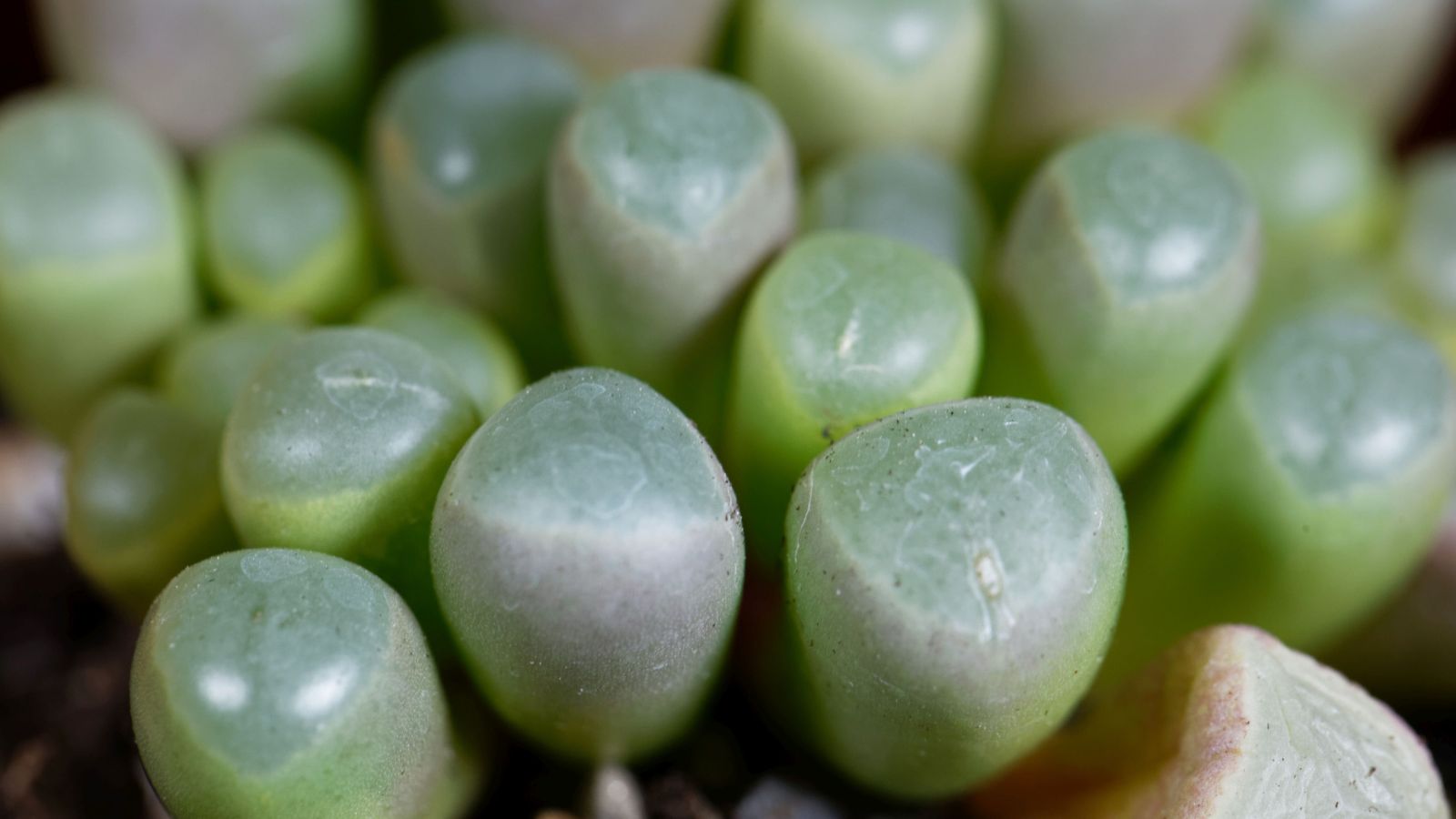

Chalk this one as a lot because the guidelines of Halloween houseplants which is perhaps merely downright weird attempting. Youngster toes succulents look like a toddler’s toes, with small see-through house home windows on the rules. Some may ponder these vegetation a trypophobia set off, and most agree they’re merely plain odd.
Youngster toes succulents are very simple to deal with, as long as you probably can give them really sturdy light. They’d develop most interesting in a south-facing window or with the help of develop lights. Like the other succulents and cacti on this guidelines, plant your weird little youngster toes in well-draining soil and solely water as quickly because it’s gone completely dry.
In case you’re lucky, your youngster toes might even bloom spherical this time of 12 months. Yellow flowers usually emerge in fall.
Black Bat Flower
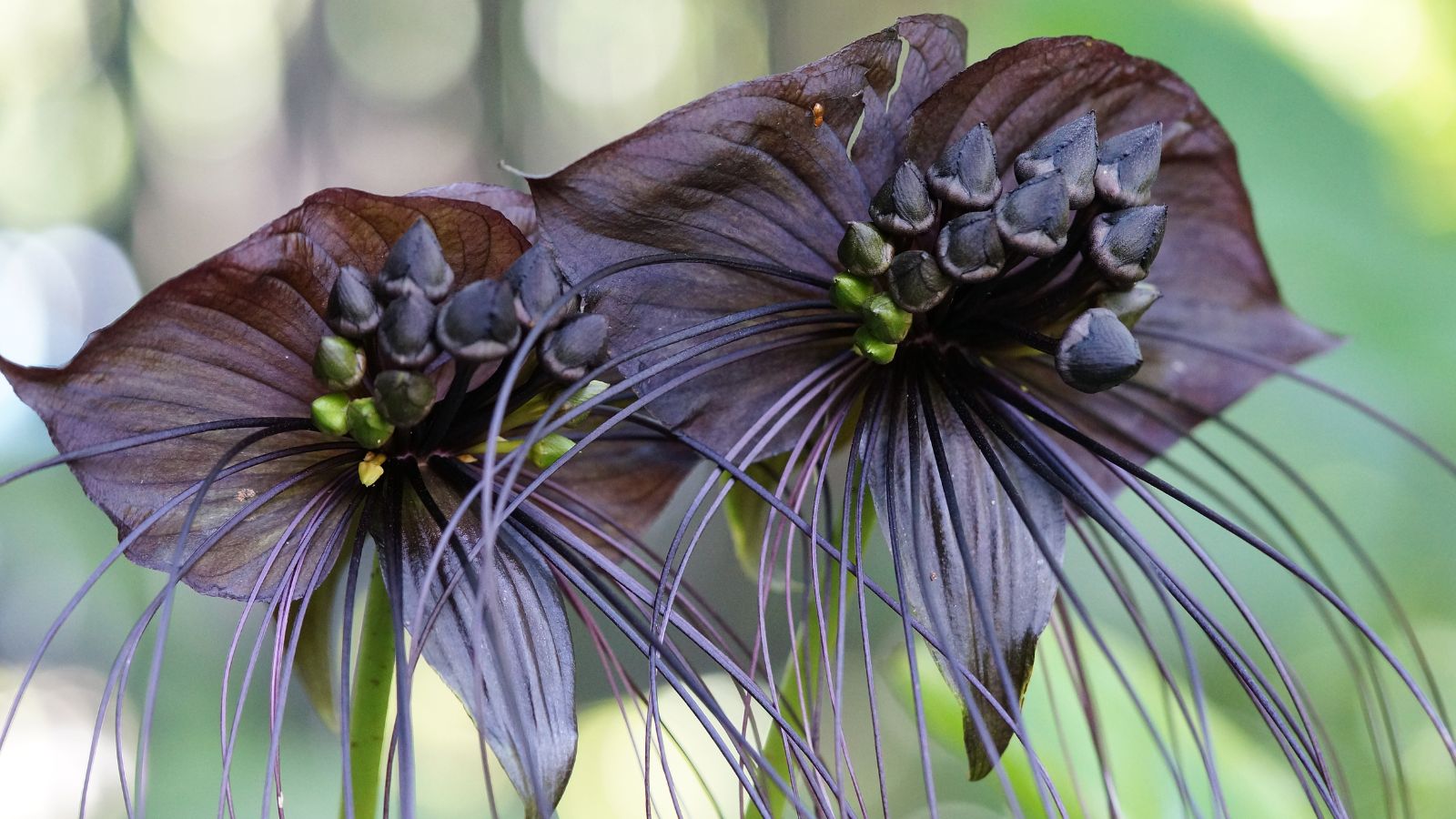

Nothing says Halloween higher than bats, except for probably black cats. Tacca chantrieri is a flowering plant inside the yam family that gives every.
Its beautiful purple-black flowers look like a combination of a bat and a whiskered black cat. It’s usually referred to as the black cat flower and even devil flower. As far as vegetation go, it doesn’t get loads spookier than that.
These tropical vegetation need shiny, indirect light, well-draining potting mix, and terracotta pots that promote good air circulation.
[ad_2]
Provide hyperlink
